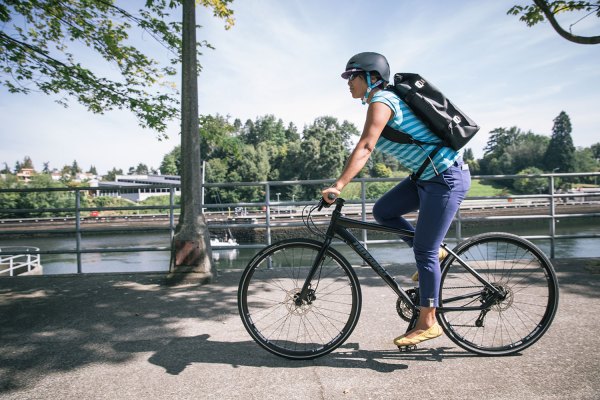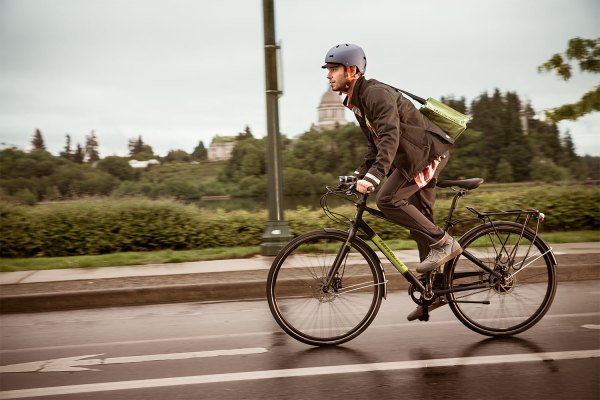Cycling is on the rise, with more people than ever commuting and recreating by bicycle. According to the U.S. Census Bureau, the number of U.S. workers who traveled to work by bicycle increased from 488,000 in 2000 to 786,000 in 2012. Total bicycle commuting for the 50 largest U.S. cities nearly doubled in the same period. The number of protected bike lanes in the U.S. has more than tripled since 2010.

Bicycling magazine named New York, Chicago, Minneapolis, Portland, Oregon and Washington, D.C. the top five U.S. bike-friendly cities in 2014. Bicycling’s ratings are based on number of miles of buffered bike lanes and dedicated paths, number of people per bike-share system based on U. S. census data, League of American Bicyclists-recognized businesses ratings, and a city’s safety score: the number of fatalities per 10,000 commuters according to the Alliance for Biking and Walking.
New York, New York
New York took top ranking for most improved. In 2008, Mayor Michael Bloomberg unveiled an ambitious plan to reclaim New York’s streets for people not cars. There are now more than 350 miles of new bike lanes, many barricaded from vehicular traffic with concrete and parking lanes. Times Square is car free. Bicycle traffic lights help commuters across intersections, and Citi Bike has more than 96,000 annual members making it the biggest bike share in the U.S. Each spring, the Five Boro Bike Tour is one of the largest cycling events in North America, with 32,000 riders cruising on car-free streets through Manhattan, the Bronx, Queens, Brooklyn and Staten Island.
Chicago, Illinois
Chicago was second in Bicycling’s 2014 ratings. During his first term, Mayor Rahm Emanuel established 100 miles of buffered and barricaded bike lanes, installed traffic cameras that cut speeding cars 90 percent, doubled dooring fines to $1,000, and quadrupled fines for law-breaking cyclists. Emanuel installed the most bike-share stations in a single city in the U.S.
Washington, D.C.
Washington took fifth in Bicycling’s round-up for its under-construction $22 million Anacostia Riverwalk Trail, part of a 70-mile regional trail system. Since 2012, pilot bike-lane projects have become permanent. A 2013 District of Columbia transportation master plan has 70 more miles of fully protected bike lanes that run downtown, as well as in underserved communities.
Seattle, Washington
Seattle ranked eighth in Bicycling’s write-up, up two spots from last year. The city recently passed a half-billion-dollar bike plan that will construct 239 miles of new greenways and 102 miles of protected bike lanes, and a bike-share system with helmet-rental kiosks is newly in operation.

Chances are that Seattle’s ranking will climb next year along with Atlanta, Boston, Denver, Indianapolis and Pittsburgh. Last week REI awarded $100,000 to PeopleForBikes Green Lanes Project to help those five cities improve bike infrastructure through protected bike lanes which are separated from traffic by curbs, planters, parked cars or posts. Studies show that protected bike lanes increase bike traffic on a street by an average of 75 percent in their first year alone.
The Southwest also rated. Arlington, Virginia ranked 19th for its permanent bike counters built into its trail network that track citywide ridership in real time. New Orleans ranked 22nd for rebuilding bike lanes in spades following Hurricane Katrina. The city went from 5 miles of bike lanes to nearly 100.
Cycling-friendly cities are not always the cities with the greatest number of bicycle commuters, however. Based on U.S. Census data, Davis, California was rated by as having the most bicycle commuters, with 19.2% of its work force pedaling to a job. Davis, which is 11 miles west of San Francisco, has had bike lanes since the late 1960s. Even in 2009, according to Wired, the city had more bikes than cars, and had bike lanes on 95 percent of its major streets. Palo Alto and Chico are close behind according to Miami Beach nearly doubled its bike commuters between 2006 and 2011, and Gainesville, Florida also saw significant growth in bicycle commuters.
According to the League of American Cyclists, a bicycle-friendly community, business, or university “welcomes bicyclists by providing safe accommodations for bicycling and encouraging people to bike for transportation and recreation. A bicycle-friendly place makes bicycling safe, comfortable, and convenient for people of all ages and abilities.” According to the League, the state of Washington is ranked #1 in the country, with 14 bicycle-friendly cities, 34 bicycle-friendly businesses, and one bicycle-friendly university.
If you think your city or state could do better, encourage your town, city or state government to step it up. The League, PeopleforBikes and a host of other organizations provide resources and support for education, encouragement, enforcement and evaluation and planning, which according to the League are the steps any town needs to make cycling a great option for work and play.
